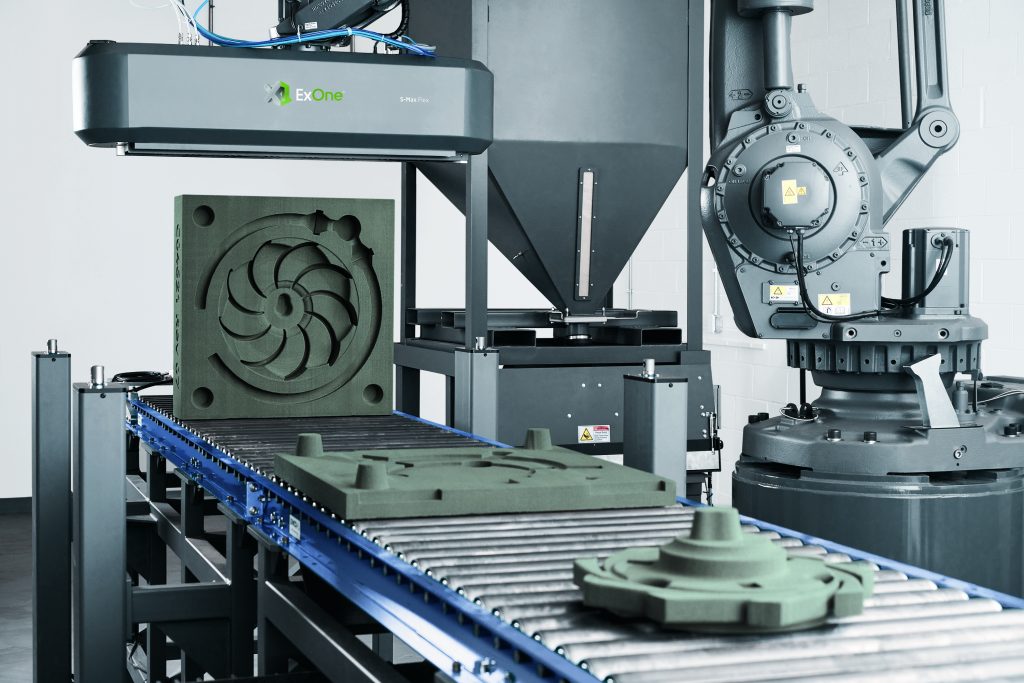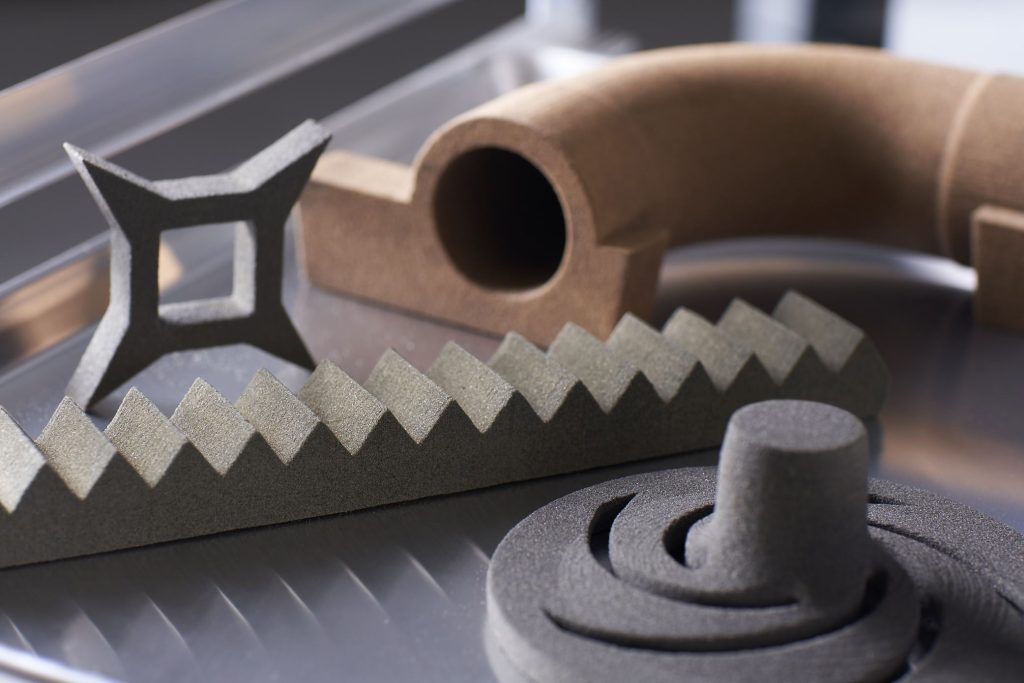Industrial 3D printer manufacturer Desktop Metal (DM) has announced the launch of an accessible new binder jetting system.
Built using the combined technologies and expertise of Desktop Metal and its subsidiary ExOne, the S-Max Flex is specifically designed to provide foundries with a robust, low-cost means of creating sand tooling for metal casting applications.
As ExOne’s most affordable unit to-date, the Flex effectively makes S-Max technology available to a wider base, and in doing so, allows more users to rapidly cast complex metal parts for clients, including those operating in the aerospace, automotive and energy sectors, amongst others.
“We designed the all-new S-Max Flex from the ground up leveraging Single Pass Jetting (SPJ) technology with the idea of making premium sand 3D printing accessible to every foundry, so that more companies can take advantage of the benefits of AM 2.0, such as distributed, local production, and remain competitive for the long-term,” said Ric Fulop, Co-Founder and CEO of Desktop Metal.
“To achieve our vision of Additive Manufacturing 2.0, we need to make production 3D printing practical in terms of speed, cost, and material availability for a broad range of applications.”
Desktop Metal’s expanding portfolio
Since it was founded in 2015, Desktop Metal has established itself as one of the leaders in the binder jet 3D printing space. One way the firm has managed to achieve this is via the sale of machines fitted with its Single Pass Jetting technology, a process which sees the steps behind binder jetting combined into the pass of a single, integrated carriage.
Desktop Metal’s current 3D printer portfolio includes the Shop System and Production System, and it continues to expand on their material compatibility as a means of growing its accessible markets. Just last year, the company became the first to qualify 4140 low-alloy steel for use with binder jetting, shortly after launching a sustainable wood 3D printing technology via its Forust subsidiary.
In the aftermath of Desktop Metal’s SPAC merger in late-2020, it has also sought to accelerate its growth trajectory via a string of acquisitions. This strategy has seen the firm buy recoater system developer Aerosint, acquire hydraulic power specialist Aidro, snap up EnvistionTEC (now ETEC) for $300 million, and most significantly purchase ExOne for $575 million, one of its key binder jetting rivals.
Having bought ExOne, Desktop Metal has now not only carried out some rebranding, adding the InnoventX, X25Pro and X160Pro to its ‘X-Series,’ but it has now poured the firms’ combined expertise into the design of a new low-cost digital casting solution.

Introducing the S-Max Flex
According to Desktop Metal, foundries are enjoying a period of strong demand for castings, but they’re struggling when it comes to finding labor. Citing data provided by the American Foundry Society, the firm says that 90% of surveyed foundries are therefore seeking to take advantage of this trend, by making capital investments over the next year.
This is where the S-Max Flex comes in, as by packing SPJ technology into a more affordable architecture, it’s designed to offer a new value proposition to foundries seeking to expand their capabilities. Through teaming an industrial robot with an all-new end effector, the system is able to selectively deposit binder into a 1900 x 1000 x 1000 mm telescoping build box, at a rate of up to 115 liters per hour.
As a result, just like the more premium S-Max and S-Max Pro models, the Flex offers users the opportunity to reliably churn out parts, while achieving a rapid return on investment. The build box itself is also available in larger volumes up to 4700 x 1000 x 1000 mm in size, in addition to taller 1000 x 2500 x 2400 mm variants, enabling foundries to adopt a machine that’s tailored to meet their specific needs.
Application-wise, given the system’s large size and ability to jet a variety of powders into parts with a dimensional accuracy of +/- 0.5 mm, Desktop Metal says it could soon address “industries beyond metalcasting.” For now, early adopters of the Flex include Founders Service & Manufacturing Co. and HTCI Co, while Desktop Metal’s Forust brand is also set to use it to print large, cost-effective wooden parts.

Technical specifications and pricing
Below are the technical specifications for the ExOne S-Max Flex 3D printer. The system is set to debut at the CastExpo 2022 metal casting trade show from April 23-26 in Columbus, Ohio. In the meantime, those interested in acquiring the system can contact Desktop Metal for a quote.
| Binder System | Furan |
| Job Box | 1,900 x 1,000 x 1,000 mm |
| Build Volume | 1,900l |
| Build Rate | Up to 115 l/h |
| Layer Height | 0.28 to 0.5 mm |
| Dimensional Accuracy | +/- 0.5 mm |
| Exhaust Air | 26 m³/h |
| External Dimensions | 8.5 x 4.9 x 4.9 m |
| Weight | 5,900 kg |
To stay up to date with the latest 3D printing news, don’t forget to subscribe to the 3D Printing Industry newsletter or follow us on Twitter or liking our page on Facebook.
For a deeper dive into additive manufacturing, you can now subscribe to our Youtube channel, featuring discussion, debriefs, and shots of 3D printing in-action.
Are you looking for a job in the additive manufacturing industry? Visit 3D Printing Jobs for a selection of roles in the industry.
Featured image shows Desktop Metal’s new ExOne S-Max Flex 3D printer. Photo via Desktop Metal.



